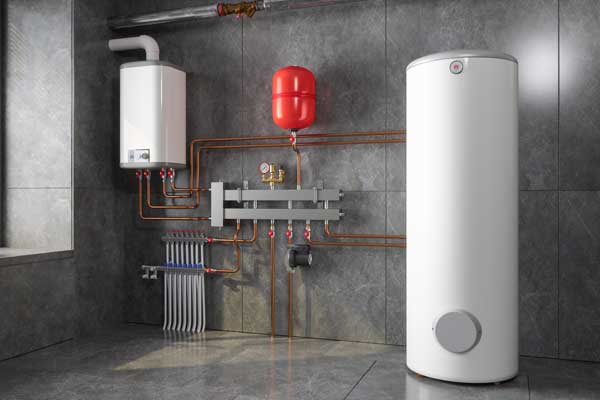Listed here on the next paragraphs you can locate a bunch of wonderful advice on the subject of Water Heater Maintenance Tips You Can't Afford to Forget.

Warm water is essential for day-to-day comfort, whether it's for a refreshing shower or cleaning meals. To ensure your warm water system runs effectively and lasts longer, regular upkeep is key. This post provides functional tips and insights on just how to maintain your home's warm water system to stay clear of disruptions and costly repair services.
Intro
Maintaining your home's warm water system could seem challenging, yet with a few easy actions, you can ensure it operates efficiently for several years to come. This overview covers every little thing from understanding your hot water system to do it yourself upkeep tips and understanding when to call professional assistance.
Importance of Preserving Your Warm Water System
Regular upkeep not just extends the life expectancy of your warm water system yet also ensures it runs successfully. Ignoring maintenance can result in reduced effectiveness, greater power costs, and also early failing of the system.
Indicators Your Hot Water System Needs Maintenance
Understanding when your warm water system requires focus can prevent significant problems. Keep an eye out for indicators such as inconsistent water temperature, unusual noises from the heating unit, or rustic water.
Purging the Hot Water Heater
Purging your hot water heater eliminates sediment buildup, improving efficiency and lengthening its life.
Monitoring and Changing Anode Rods
Anode poles protect against deterioration inside the storage tank. Examining and replacing them when worn is important.
Complicated Issues Requiring Specialist Assistance
Examples include significant leakages, electrical problems, or if your water heater is continually underperforming.
Regular Specialist Upkeep Perks
Expert upkeep can include extensive evaluations, tune-ups, and guaranteeing conformity with safety and security criteria.
Checking and Adjusting Temperature Level Setups
Adjusting the temperature level setups guarantees optimum performance and security.
DIY Tips for Maintenance
You can execute a number of upkeep jobs yourself to maintain your hot water system in top problem.
Checking for Leakages
Frequently inspect pipelines and connections for leakages, as these can cause water damage and higher costs.
Comprehending Your Hot Water System
Prior to diving into maintenance jobs, it's helpful to recognize the basic parts of your hot water system. Commonly, this includes the hot water heater itself, pipes, anode poles, and temperature controls.
Month-to-month Maintenance Tasks
Normal month-to-month checks can assist capture small issues prior to they escalate.
Checking Pressure Alleviation Valves
Testing the pressure safety valve ensures it operates correctly and stops excessive pressure accumulation.
Shielding Pipes
Protecting warm water pipelines lowers warm loss and can save power.
When to Call a Professional
While do it yourself maintenance is valuable, some concerns call for professional competence.
Verdict
Regular upkeep of your home's warm water system is crucial for efficiency, durability, and expense financial savings. By following these ideas and knowing when to seek specialist help, you can make sure a dependable supply of warm water without unexpected disruptions.
How to Maintain an Instant Hot Water Heater
Before tinkering with your hot water heater, make sure that it’s not powered on. You also have to turn off the main circuit breaker and shut off the main gas line to prevent accidents. Also turn off the water valves connected to your unit to prevent water from flowing into and out of the appliance. 2. When you’re done, you have to detach the purge valves’ caps. These look like the letter “T” and are situated on either side of the water valves. Doing so will release any pressure that has accumulated inside the valves while at the same time avoid hot water from shooting out and burning your skin. 3. When the purge valves’ caps are removed, you have to connect your hosing lines to the valves. Your unit should have come with three hoses but if it didn’t, you can purchase these things from any hardware or home repair shops. You can also get them from retail stores that sell water heating systems. Read the user’s manual and follow it to complete this task properly. When the hosing lines are connected, open the purge port’s valves. 4. You should never use harsh chemical cleaners or solutions when cleaning your unit. Make use of white vinegar instead. It should be undiluted and you’ll probably use about 2 gallons. 5. Now flush your water heater. This task should probably take about 40 minutes. We can’t give you specific directions for this because the procedure is carried out depending on the type, model and brand of your heater. With that being said, refer to the user’s manual. 6. When you’re done draining the unit, you have to turn off the purge port valves again. Remove the hosing lines that you earlier installed on each of the water valves. Put the valve caps (purge port) back in their respective places and be very careful so as not to damage the rubber discs that are found inside these caps. 7. Now that everything’s back in place, check your user’s manual again to find out how to reactivate your water heating system. 8. Once it is working, turn one of your hot water faucets on just to let air pass through the heater’s water supply pipes. Leave the tap on until water flows smoothly out of it. https://www.orrplumbing.com/blog/2014/september/how-to-maintain-an-instant-hot-water-heater/

I was introduced to that write-up on How to Maintain Your Water Heater & Prolong its Life through a pal on our other web address. Appreciated our post? Please quickly share it. Let somebody else check it out. We truly appreciate reading our article about What Kind of Maintenance Do Water Heaters Need?.
Get Offer